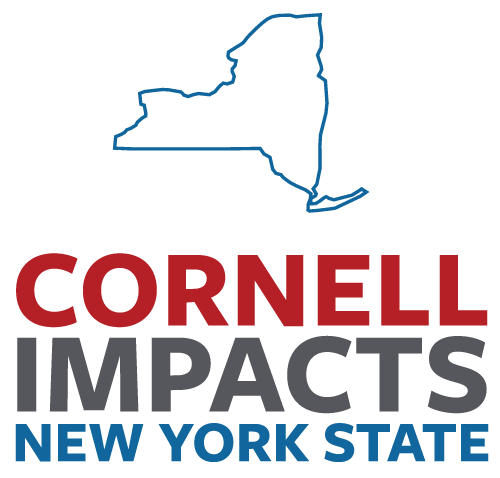An alga that threatens freshwater ecosystems and is toxic to vertebrates has a sneaky way of ensuring its success: It suppresses the growth of algal competitors by releasing chemicals that deprive them of a vital vitamin.
The finding was reported in a new study, published July 2 in the journal mBio. It describes how the cyanobacteria Microcystis aeruginosa manipulates its environment to give itself advantages to take over the water column, leading to harmful algal blooms and mats in lakes during hot summers.
"Microcystis seems to be able to dominate more and more in the changing climate," said Beth Ahner, professor in the Department of Biological and Environmental Engineering in the College of Agriculture and Life Sciences (CALS) and corresponding author of the paper.
The study shows how M. aeruginosa, a common harmful cyanobacteria, produces and releases chemicals, called antivitamins, that mimic thiamin, also known as vitamin B1. In the presence of the antivitamins, other alga species, some of which cannot synthesize their own thiamin, take up the chemicals from the water and are unable to distinguish them from the true vitamin. Inside the host, the chemicals mimic vitamin B1 and inhibit the thiamin-dependent enzymes required for growth. The study also revealed that M. aeruginosa has a specialized thiamin-biosynthesis enzyme that makes it resistant to the antivitamins that it produces.
While the frequency of these harmful algae blooms has increased, the reasons why have been unclear. People hypothesize the rise is related to watershed runoff that carries pollution and macronutrients, like phosphorus and nitrogen, Ahner said. Researchers are also perplexed about why blooms are occurring even in very clean lakes, such as Skaneateles Lake in the Finger Lakes region of New York.
"No one's ever really shown that this organism has an advantage in taking up those macronutrients over other algae," Ahner said.
In addition, M. aeruginosa produces chemicals toxic to vertebrates. "If you have a dog lapping up the water on the shore and it ingests these organisms, it has the potential to cause severe illness and even death," Ahner said. The toxins have contaminated municipal water supplies, such as in Toledo, Ohio, on the banks of Lake Erie in 2014.
In the study, the researchers grew M. aeruginosa in a co-culture with another algae, Chlamydomonas reinhardtii, a model organism that researchers use for studies. While C. reinhardtii produces its own thiamin in the wild, the researchers used a mutant version that lacked the ability to synthesize the vitamin. In the presence of C. reinhardtii, M. aeruginosa released elevated levels of two thiamin antivitamins, bacimethrin and methoxythiamin, which inhibited C. reinhardtii. The mutant C. reinhardtii, without its own thiamin, was much more sensitive to the antivitamins than the wildtype. Additions of thiamin to the culture reversed the inhibitory effects of being exposed to the antivitamins, in both the mutant and wildtype.
Co-author Mingming Wu, professor of biological and environmental engineering in CALS, provided microfluidic devices that allowed the team to test the algae with steady, extremely low concentrations of antivitamins, similar to levels found in the environment. "We were able to show that the environmentally relevant concentrations of the chemicals are potentially toxic to organisms in the field," Ahner said.
Using a technique called quantitative polymerase chain reaction (qPCR), the researchers identified a few genes they believe are involved in making antivitamins, Ahner said.
Finally, co-authors from Oregon State University shared data that identified the presence of the antivitamin bacimethrin in the environment and at elevated levels when M. aeruginosa bloomed.
Mohammad Yazdani, a postdoctoral research associate in the Department of Biological and Environmental Engineering, is the paper's first author. Coauthors include Geoffrey Coates, the Tisch University Professor in the Department of Chemistry and Chemical Biology in the College of Arts and Sciences (CAS).
The study was supported by the U.S. Department of Agriculture's National Institute of Food and Agriculture, the U.S. Fish and Wildlife Service, the California Department of Fish and Wildlife, and CALS and CAS at Cornell.







